On the first day of Ghost Month every year, a sinister, chilly wind would sweep through the streets of Taniao (打貓). The wind would bring the cries of hungry ghosts, terrifying the local populace for the entire month.
On occasion, a 10-meter tall being with a blue face, protruding fangs and twin spiral horns clad in bright red armor would appear, flickering its extremely long tongue covered in flames. Whenever it appeared, the winds would stop and the ghosts would quiet down.
The people were grateful to this deity, who eventually became known as Dashiye (大士爺), and worshiped it every first of July by creating an effigy of it and hiring monks to ease the suffering of the ghosts.
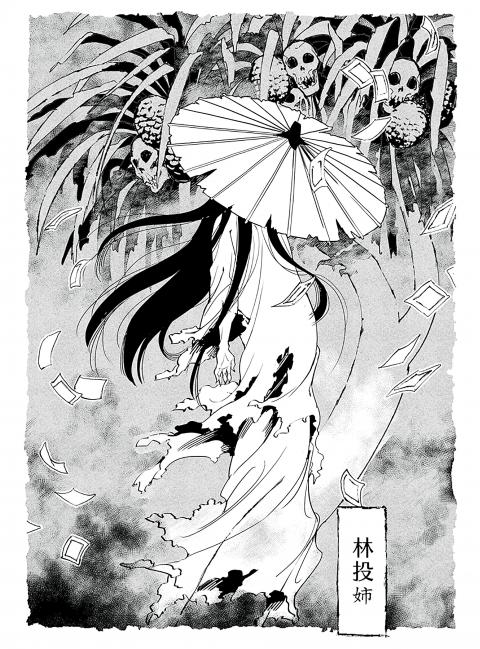
Illustration courtesy of Chang Chi-ya
This tale can be found in a late-1890s publication describing the administration, geography and customs of the area that is roughly today’s Chiayi County. It is among the 229 entries in Ho Ching-yao’s (何敬堯) book Yaoguai Taiwan (妖怪台灣), a compendium of supernatural or fantastic beings, creatures and events from both Aboriginal and Han Chinese cultures collected from hundreds of historical texts between 1624 and 1945.
“If we’re talking about Ghost Month, the one being that we should get to know is Dashiye,” Ho says. “He can pacify the ghosts and prevent them from causing trouble.”
While Dashiye and other deities are relatively known due to popular religious rituals, Ho says that there’s still a lack of knowledge about Taiwan’s supernatural history due to political whitewashing of Taiwanese education and the lack of formal study on the subject because it often isn’t considered proper history.
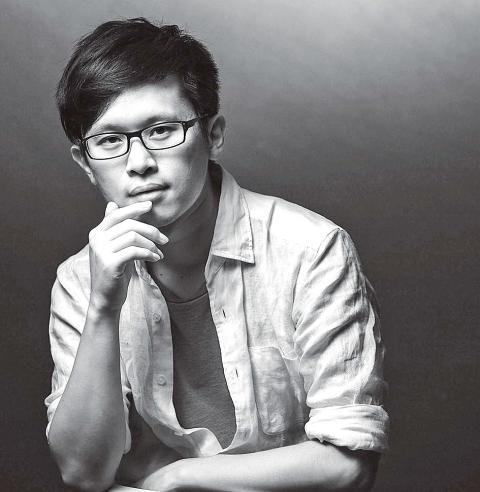
Photo courtesy of Ho Ching-yao
Some of the more obscure items include a fortune-telling human-faced bull who was reportedly seen near Taichung in 1862, demons spotted throwing rocks at people’s roofs in 1925 (this was reported in the newspapers) and several sightings of sharks turning into deer, and vice versa.
“This is my way of promoting Taiwanese fantasy literature,” Ho, an author of several novels, says. “I feel like I’m searching for or trying to put together a lost history, and I hope that people can use my material in their movies, novels, plays, poems and songs.”
HISTORY OF IMAGINATION
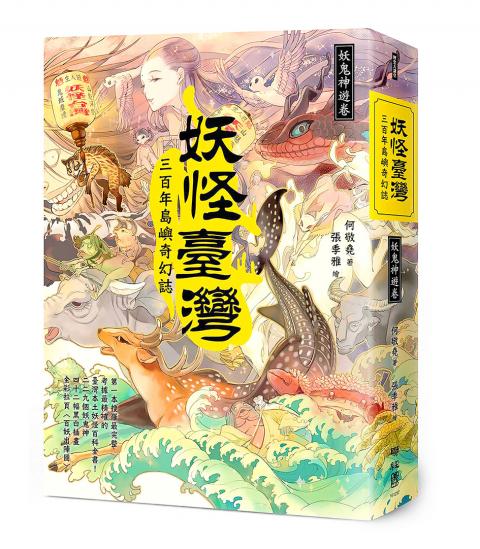
Photo courtesy of Ho Ching-yao
Ho says that while the Chinese characters of yaoguai (妖怪) are identical to Japanese yokai, a class of supernatural demons and spirits, his version is a contraction of yaoguishenguai (妖鬼神怪, literally spirits, ghosts, deities and monsters), which by his definition includes all types of supernatural phenomena recorded throughout Taiwanese history.
Ho completed his compendium last year and has already put his findings to practical use, publishing Yaoguai Mingchanglu Formosa (妖怪鳴唱錄) in February, a young adult novel featuring several Taiwanese mythical creatures, demons and ghosts who form a band and write songs about their kind to overturn people’s perceptions of them. The book comes with a CD of songs; it was also turned into a phone game.
“It’s my experiment to try different ways of presenting these yaoguai,” Ho says.
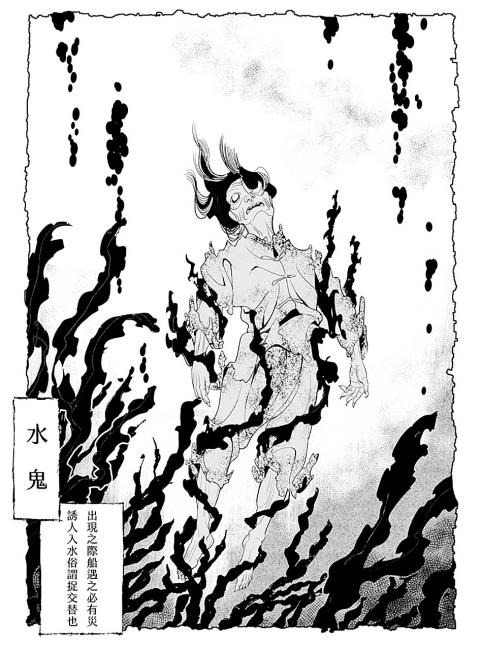
Illustration courtesy of Chang Chi-ya
Ho says he first started collecting the tales as potential material for his novels, and didn’t expect there to be so many that he was clueless about.
“The material is actually rich and easily accessible — the problem is that it’s scattered in texts belonging to various fields, including anthropology, folklore studies and history,” he says.
Ho says that while historians tend to focus on true events, the history of people’s imaginations is just as valuable, just like how modern people create new monsters for popular entertainment and still follow various superstitions. But not only is this world often ignored, there was a longstanding belief that these Taiwanese folk customs were vulgar since they were suppressed by the Japanese and Chinese Nationalist Party (KMT) governments that ruled over Taiwan.
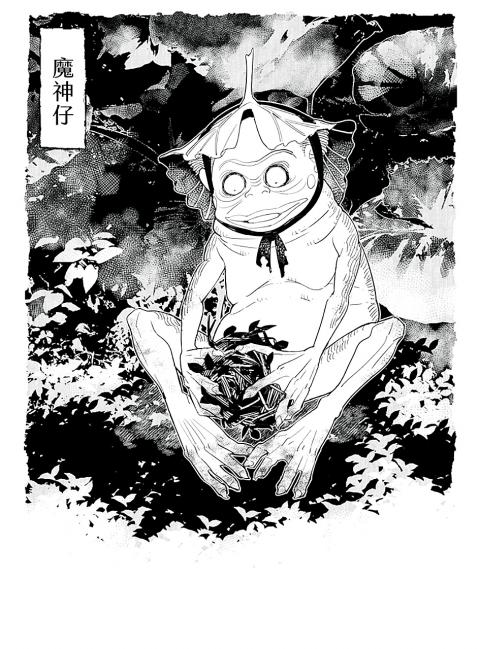
Illustration courtesy of Chang Chi-ya
A figure Ho looks up to is folklorist Hu Wan-chuan (胡萬川), who in a 2008 paper lamented that future children will only know about Little Red Riding Hood and not Aunt Tiger (虎姑婆), both stories that involved anthropomorphic beasts who ate children.
“Almost every Taiwanese over the age of 50 has undoubtedly heard the story of Aunt Tiger when they were young. But today’s young people are not too familiar with these types of local folk tales. I know this from interacting with the audience during my talks,” Ho writes.
Ho adds that these stories were traditionally passed on orally in the Hoklo (also known as Taiwanese) and Hakka languages, which were branded as tacky and unrefined when the government imposed Mandarin upon the populace after 1949. As a result, these legends suffered too.
Ho says that much can be gleaned from ancient society by studying the imaginary world — such as the much higher proportion of female ghosts in Taiwanese folklore compared to male ones.
“There was no gender equality back then, and many women were not respected when they were alive. When they died, they would terrorize the living to seek justice or to obtain a place in the family altar,” he says.
BEHIND THE YAOGUAI
Ho says that the most approachable way to promote supernatural history is to focus on the beings, as presenting a giant turtle that controlled the weather complete with illustration would draw more intrigue than simply talking about ancient beliefs about rain and wind. Through these characters, he hopes to draw people into learning more about the history behind them.
“I’m repackaging history and culture through yaoguai,” he says. “These supernatural beings don’t just come out of nowhere. Behind their powers and abilities, there are many cultural factors.”
For example, one version of the legend of Na Tao Ji (林投姊, or screw pine tree sister) involves a widow who was tricked by her Chinese lover, who used her fortune to purchase a large amount of camphor balls in Tainan, sold them in Hong Kong and went back to China, never to return. The widow went mad, strangled her children and hung herself from a screw pine tree. From then on, the tree became a symbol of an unfortunate woman, and it’s said that she still haunts them.
“This is actually a myth of immigration and travel, and we can also indirectly learn something about Taiwanese ecology from the tree,” Ho says.
Another example is the two Qing Dynasty records regarding giant crocodiles with golden scales that emitted fire near Penghu — which may or may not be related to the crocodile fossil found in Penghu in 2006 that was determined to be a new species.
“We’re not sure if they are connected, but it’s just a fun way to learn more about Taiwan,” Ho says.
While overseas, Ho chooses yaoguai that are easily relatable to foreigners. While doing a residency in the US, he introduced Moxina (魔神仔), a kind of mountain demon that’s known to kidnap people, especially children. Japanese-era newspapers mention Moxina several times, and the demon was most recently featured in the horror movie series, The Tag-Along (紅衣小女孩).
“This fear of people and especially children disappearing is universal to cultures around the world,” he says.
In Japan, he spoke of a type of large Japanese-minted dragon coin that was also in circulation in Taiwan during colonial times. Since such a large, ornate coin was unusual to Taiwanese, a legend arose that they could fly and bring fortune to the kind-hearted and punish the evil. Whenever someone saw a white light flash in the sky, they would say that it was a dragon coin.
“The Japanese could not believe that an ordinary coin to them was exaggerated into such a legend in Taiwan,” Ho says.
But most importantly, Ho still hopes that these yaoguai can become a common part of popular culture, just like the yokai in Japan.
“We need to inject modern imagination into Taiwanese yaoguai and give them new life, otherwise they’ll just remain fossilized terms found in ancient texts,” he says.

April 14 to April 20 In March 1947, Sising Katadrepan urged the government to drop the “high mountain people” (高山族) designation for Indigenous Taiwanese and refer to them as “Taiwan people” (台灣族). He considered the term derogatory, arguing that it made them sound like animals. The Taiwan Provincial Government agreed to stop using the term, stating that Indigenous Taiwanese suffered all sorts of discrimination and oppression under the Japanese and were forced to live in the mountains as outsiders to society. Now, under the new regime, they would be seen as equals, thus they should be henceforth

Last week, the the National Immigration Agency (NIA) told the legislature that more than 10,000 naturalized Taiwanese citizens from the People’s Republic of China (PRC) risked having their citizenship revoked if they failed to provide proof that they had renounced their Chinese household registration within the next three months. Renunciation is required under the Act Governing Relations Between the People of the Taiwan Area and the Mainland Area (臺灣地區與大陸地區人民關係條例), as amended in 2004, though it was only a legal requirement after 2000. Prior to that, it had been only an administrative requirement since the Nationality Act (國籍法) was established in

With over 80 works on display, this is Louise Bourgeois’ first solo show in Taiwan. Visitors are invited to traverse her world of love and hate, vengeance and acceptance, trauma and reconciliation. Dominating the entrance, the nine-foot-tall Crouching Spider (2003) greets visitors. The creature looms behind the glass facade, symbolic protector and gatekeeper to the intimate journey ahead. Bourgeois, best known for her giant spider sculptures, is one of the most influential artist of the twentieth century. Blending vulnerability and defiance through themes of sexuality, trauma and identity, her work reshaped the landscape of contemporary art with fearless honesty. “People are influenced by

The remains of this Japanese-era trail designed to protect the camphor industry make for a scenic day-hike, a fascinating overnight hike or a challenging multi-day adventure Maolin District (茂林) in Kaohsiung is well known for beautiful roadside scenery, waterfalls, the annual butterfly migration and indigenous culture. A lesser known but worthwhile destination here lies along the very top of the valley: the Liugui Security Path (六龜警備道). This relic of the Japanese era once isolated the Maolin valley from the outside world but now serves to draw tourists in. The path originally ran for about 50km, but not all of this trail is still easily walkable. The nicest section for a simple day hike is the heavily trafficked southern section above Maolin and Wanshan (萬山) villages. Remains of